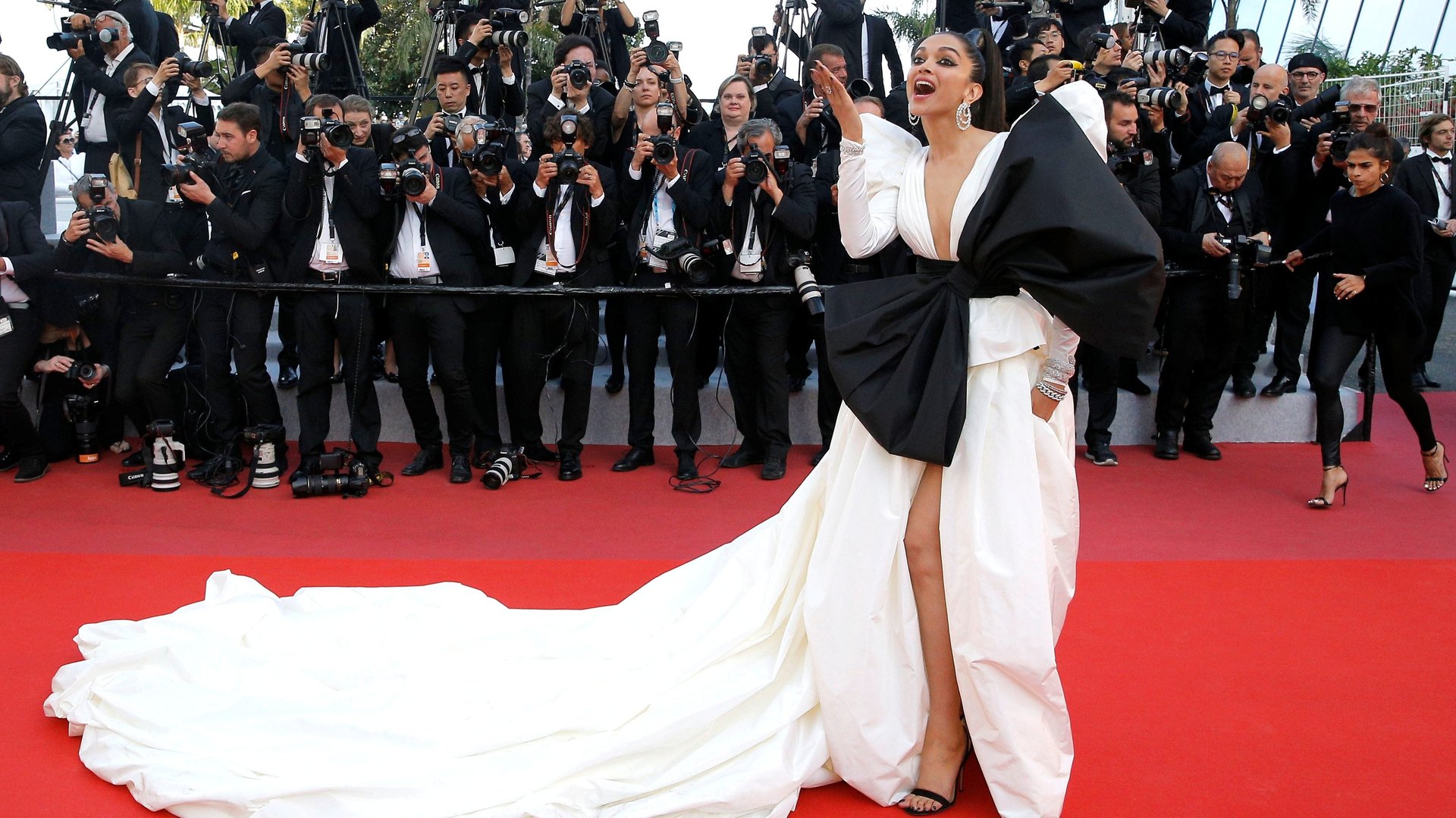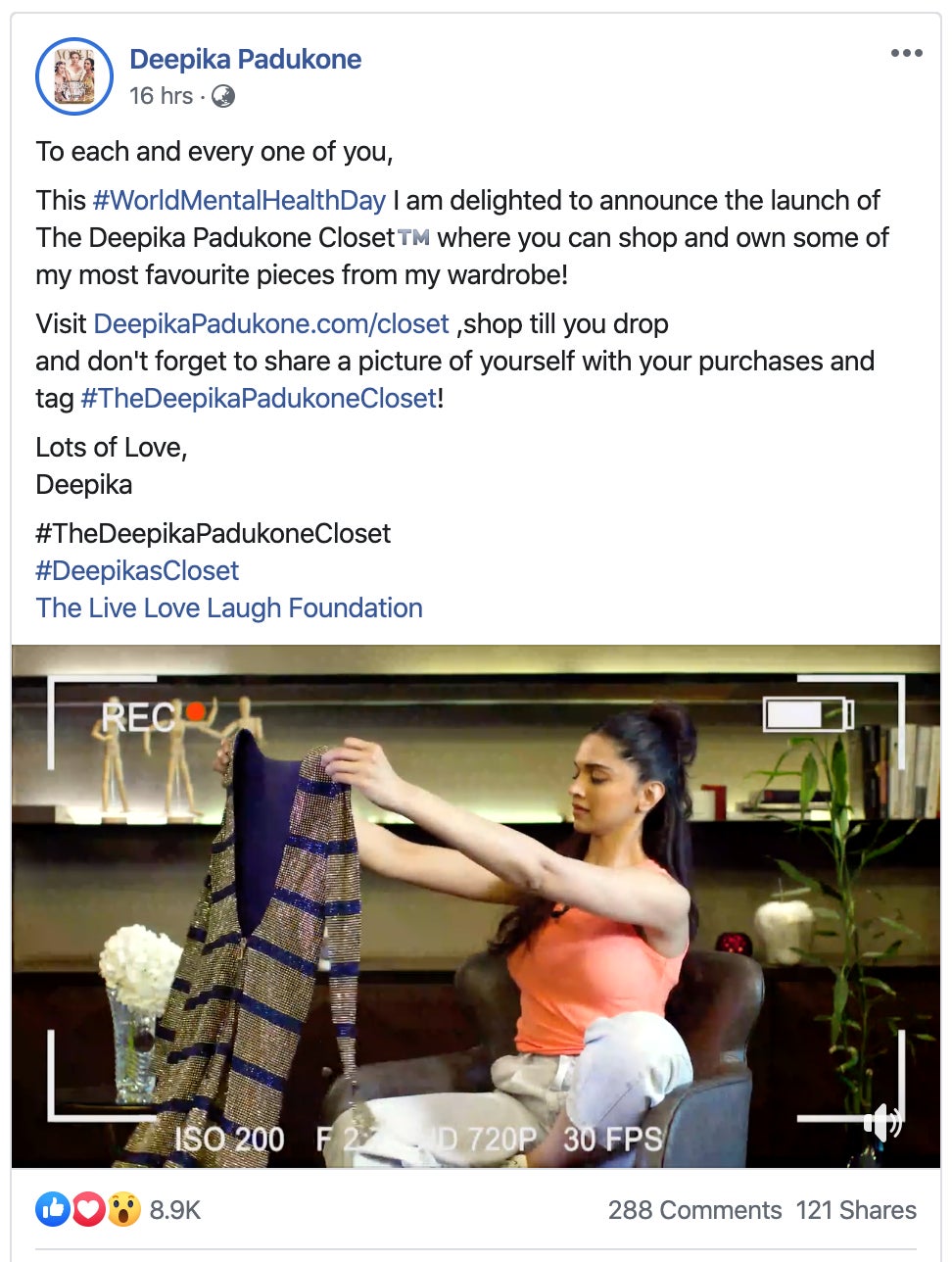Deepika Padukone needs to have a chat with her public relations team
On World Mental Health Day last week Deepika Padukone tweeted:


On World Mental Health Day last week Deepika Padukone tweeted:
Minor detail: the tweet also had a video that ran for 43 seconds where she mentions that the sale proceeds would go towards supporting those struggling with mental illness through her Live Love Laugh Foundation.
Now, anyone with reasonable experience in any kind of professional communications, like journalism, corporate communication, video scripting, etc would know how to evaluate the material in hand, prioritise the information based on what may be most critical for the audience to know and most importantly, how to frame it.
But, it clearly looks like that kind of rigor wasn’t part of framing these two tweets.
Let me take you through the process.
What are the elements of Padukone’s announcement?
- Launch of an online store called The Deepika Padukone Closet™.
- What does The Deepika Padukone Closet™ offer?
- Why was The Deepika Padukone Closet™ launched?
- The URL to The Deepika Padukone Closet™ store.
- Why should people buy from The Deepika Padukone Closet™?
This is a very well-known and old construct in communications, called the Five Ws of storytelling: Who, What, Why, Where and When. I’ve taken elements from this to build my list of what are the points worth mentioning in this announcement. Most professional communicators wouldn’t need to make such an explicit list to arrive at this thought-process as they’d be doing it almost intuitively, in their mind, given their experience.
But, because it is being shared on social media platforms, the team also needs to evaluate how to structure the content differently, depending on each platform’s specific nuances.
It clearly looks like the team wrote one script and used it across Twitter, Instagram, and Facebook, with no change whatsoever.
Observe the badly placed comma: “Visit DeepikaPadukone.com/closet ,shop till you (drop).” It is exactly the same in all three platforms. This is just lazy work by Deepika’s public relations (PR) and social media teams.


And it also looks like the team was Instagram-first, without taking into account the changes needed for other text-focused platforms such as Facebook and Twitter.
On Instagram, people notice the visuals first and see the text later. But on Twitter and Facebook the nature of content consumption, however fleeting, is different because they started as text-first platforms. The likelihood of people skimming through the text without watching the video (which may not be auto-playing on either Facebook or Twitter) is far higher than on Instagram.
Without watching the video, the tweet and the Facebook post look horribly awkward and terribly framed. Only upon viewing the video would you realise that the launch is rightly intended and in line with the foundation’s vision.
As a result, many, many people were seen seeming flabbergasted by Deepika’s tweet. This was simply because, in a fast timeline like that of Twitter, people see the text first and not the video. The video is an after-thought, after it being sold really well by the text (a pitch to watch the video has to be compelling).
And as usual, rabid fans of the star were seen shouting at those people calling them impatient and not willing to watch even a 43-second video to get the full context.
I wouldn’t blame only the audience—communication is a 2-way process. The speaker needs to think about what she is communicating, to whom and how, as much the listener needs to think about getting the context right.
And here’s another problem: in a world where 15-second videos are the norm (on TikTok) and where even Facebook is launching a contest for 10-second videos, a 43-second video to explain the whole construct may seem like overkill. No, in the overall scheme of things, 43 seconds is hardly anything, but in order to not be misunderstood, it was imperative that the team think through this thoroughly.
In the five items I listed as key points, here is the way I would prioritise them to make an announcement on Twitter and Facebook:
- Launch of an online store called The Deepika Padukone Closet™
- The URL to The Deepika Padukone Closet™ store
- Why was The Deepika Padukone Closet™ launched?
- What does The Deepika Padukone Closet™ offer?
- Why should people buy from The Deepika Padukone Closet™?
Now, I’d mention, in text, the first three, in-tweet, while four and five are perfectly appropriate for the video, however long it is. The URL in the first tweet is critical because that is the call-to-action. The reason behind the store is critical because that explains why this store exists and what it aims to achieve. To hide that reason and the URL inside the video and expect people to see the video and then arrive at their conclusion is not misplaced, but misjudged. That is the nature of specific social media platforms and it is prudent to be cognizant of such differences.
This post first appeared on beastoftraal.com. We welcome your comments at [email protected].